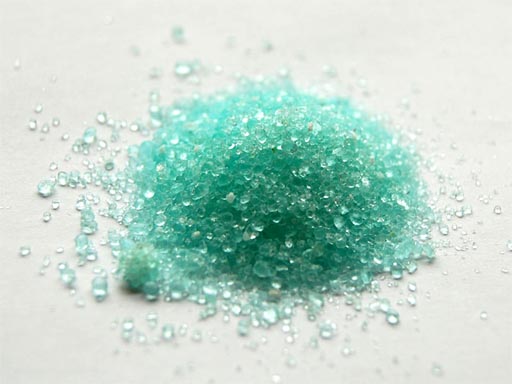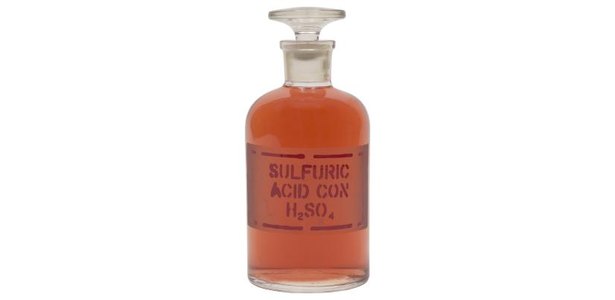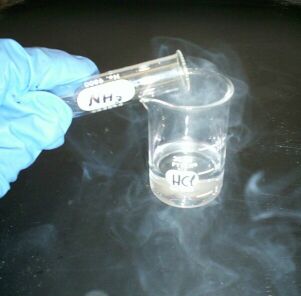Tips: Before preparing a salt, find out if the salt is soluble or insoluble. A soluble salt is made from an acid. An insoluble salt is prepared by precipitation.
Table 1 Soluble Salts and Insoluble Salts
Soluble Salts
|
Insoluble Salts
|
All (group I) sodium, potassium, and ammonium
| |
All nitrates
|
|
Most chlorides
|
Silver chloride and
lead chloride
|
Most sulfates (sulphates)
|
Calcium sulfate,
barium sulfate and lead sulfate
|
Most bromide and iodides
|
Silver bromide,
silver iodide, lead bromide and lead iodide
|
Sodium, potassium(group I), and ammonium carbonates
|
All other carbonates
|
Preparing Insoluble Salts by Precipitation
Example:
preparing insoluble barium sulfate salt.
- Barium sulfate salt is made of Ba2+ ions and SO42- ions.
- So, we have to prepare two soluble salts solutions of which one contains Ba2+, its positive metal ions and the other contains the SO42-, its negative non-metal ions.
- These two ions will react and form a precipitation as barium sulfate salt.
Ba2+ (aq) + SO42- (aq) ---> BaSO4 (s)
 |
| A centrifuge |
More examples of preparing insoluble salts:
Table 2. Preparing Insoluble Salts
Preparing insoluble salts
|
‘+’ ions
|
‘- ' ions
|
Solution used
|
Solution used
|
Salt precipitation
|
Spectator ions (no changes in reaction)
|
Barium sulfate BaSO4
|
Ba2+
|
SO42-
|
Barium nitrate
with Ba2+
|
Sodium
sulfate with SO42-
|
Barium sulfate BaSO4
|
NaNO3
sodium nitrate
soluble and
remained unchanged as Na+ ions and NO3- ions
|
Reaction: Ba(NO3)2 (aq) + Na2SO4(aq) ---> BaSO4
(s) + 2 NaNO3 (aq)
|
||||||
Barium sulfate BaSO4
|
Ba2+
|
SO42-
|
Barium chloride
with Ba2+
|
Sodium
sulfate with SO42-
|
Barium sulfate BaSO4
|
NaCl
sodium chloride
soluble and
remained unchanged as Na+ ions and Cl- ions
|
Reaction: BaCl2 (aq) + Na2SO4(aq) ---> BaSO4
(s) + 2 NaCl2 (aq)
|
||||||
Barium sulfate BaSO4
|
Ba2+
|
SO42-
|
Barium chloride
with Ba2+
|
Magnesium
sulfate with SO42-
|
Barium sulfate BaSO4
|
MgCl2
magnesium chloride
soluble and remained unchanged as Na+ ions and Cl- ions
|
Reaction: BaCl2 (aq) + MgSO4(aq) ---> BaSO4
(s) + 2 MgCl2 (aq)
|
||||||
Silver chloride
AgCl |
Ag+
|
Cl-
|
Silver
nitrate with
Ag+ |
Sodium
chloride with Cl-
|
Silver
chloride AgCl
|
NaNO3
sodium nitrate
soluble and
remained unchanged as Na+ ions and NO3- ions
|
Reaction: AgNO3 (aq) + NaCl(aq) ---> AgCl (s) + NaNO3
(aq)
|
||||||
Lead iodide
PbI2 |
Pb2+
|
I-
|
Lead nitrate
with
Pb2+ |
Sodium
iodide with
I- |
Lead iodide
PbI2
|
NaNO3
sodium nitrate
soluble and
remained unchanged as Na+ ions and NO3- ions
|
Reaction:
Pb(NO3)2 (aq) + NaI (aq)
---> PbI2 (s) + NaNO3 (aq)
|
||||||














 hydrogen ions + ethanoate ions
hydrogen ions + ethanoate ions